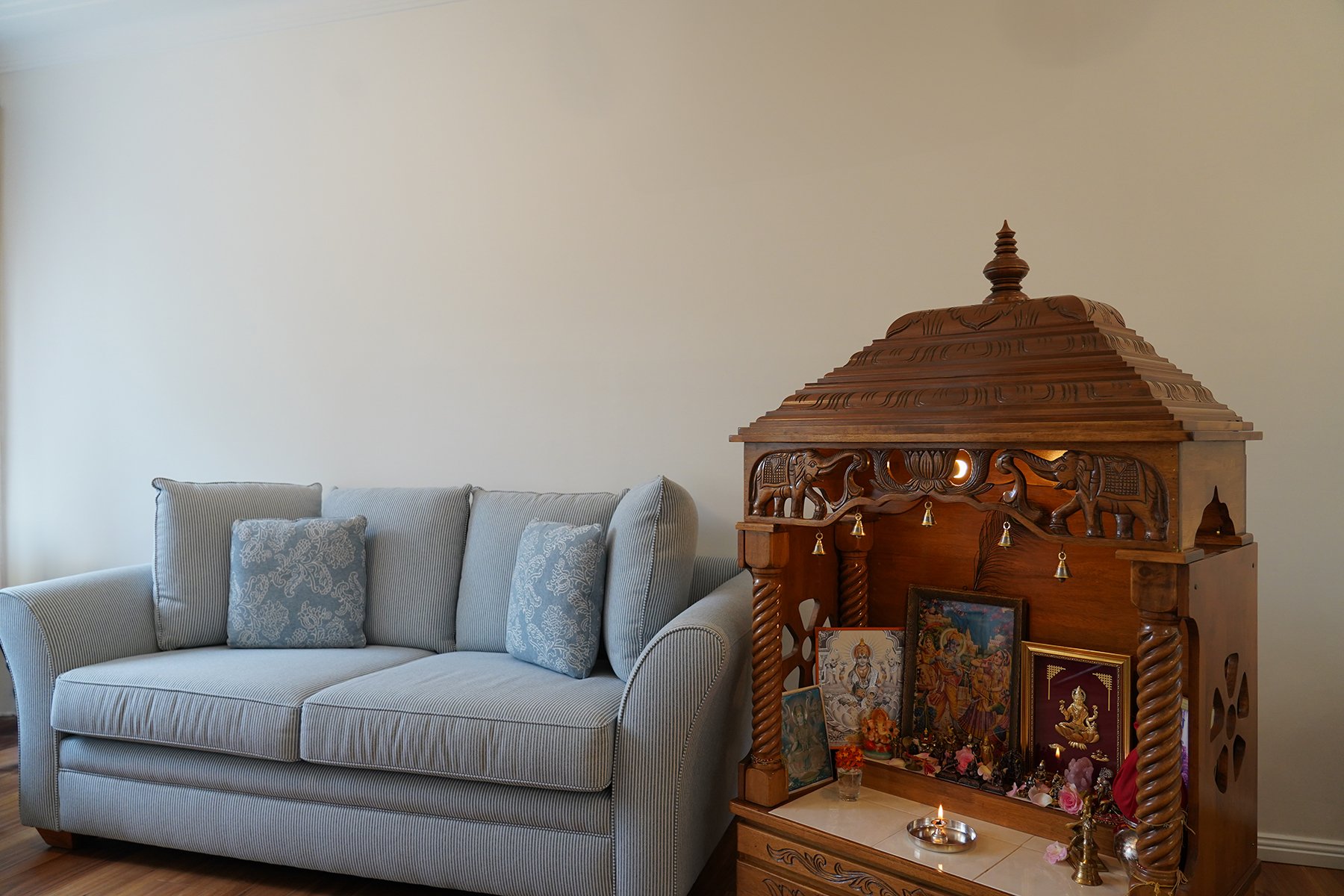The History of Pooja Mandirs: From Tradition to Modernity
Pooja Mandir’s, commonly referred as home temples have been in Indian households for centuries. Pooja Mandirs are a direct reflection of indian culture and the practices conducted in the culture. Over the last centuries Pooja Mandir’s have been the product of immense change along side with every other furniture piece becoming more unique through the use of different materials adapting to the ever changing lifestyles.
Ancient Origins
Lets start at the beginning, The idea of originated about 3500 years ago during the Vedic Period around 1500 BCE. They were used to worship different idles but it was usually done in open spaces, under sacred tree. Eventually as more settlements formed the idea of a formal structure for worship was born.
The original mandirs were simple and not very intricate made for a purpose crafted out of stone or wood. They still however had carvings and motifs that represented Hindu mythology and nature with the intention to connect the Divine with the earthly Realm. These Mandir’s were not only a place for worship but a show of craftsman ship of the time.
The Evolution of Design
Whilst the Indian Dynasty would evolve so would the Mandir with improvements in the etching making extremely intricate designs. During the Gupta Period 320CE architecture reached new heights which only improved the design of household mandirs. Household mandirs gained influence as they represented larger temples, making it popular amongst the higher class citizens.
during the Medivial period there was a large expansion of material use making it easier to use more unique materials to create a home mandir. However wood stayed consistent as a popular material the introduction of brass and bronze was used aswell. Regional variations began appearing aswell for example in south India there were more carvings surrounding deities whilst north India had larger emphasize on symmetry and elegant simplicity
The Role of Mandirs in Daily Life
Pooja Temples are more then a physical structure they are imbued with deep cultural relevance and spiritual significance. Serving as a central point of daily rituals, from chanting mantras and offerings to the Divine. The home mandir represents purity and devotion to the Divine all in your home.
it would serve as a point of community, bringing everyone to a central place from all generations. Creating an environment where you can share stories and ideas down generations. Intergenerational bonds were fostered here giving it the community feel.
Modern Interpretations
We currently live in an extremely fast paced world, Pooja Mandirs have done work to adapt and fit into society adapting for contemporary lifestyles and spaces. Modern mandir’s like the examples shown here are a representation of that. Using more modern materials and techniques however if you would like to keep as much tradition as possible with your mandir come visit our showroom and see our display.

